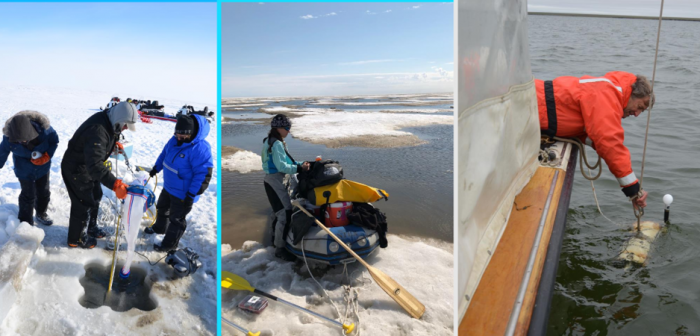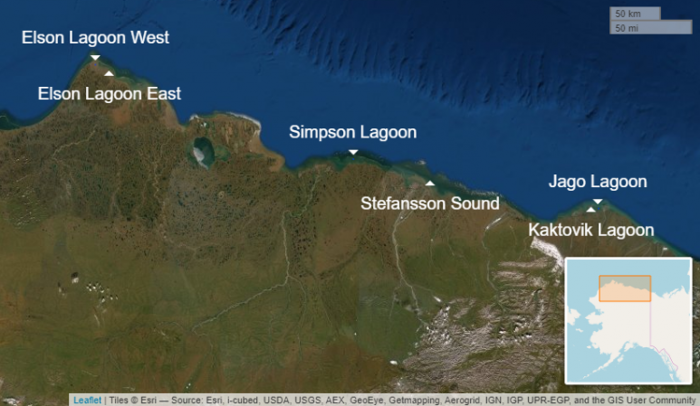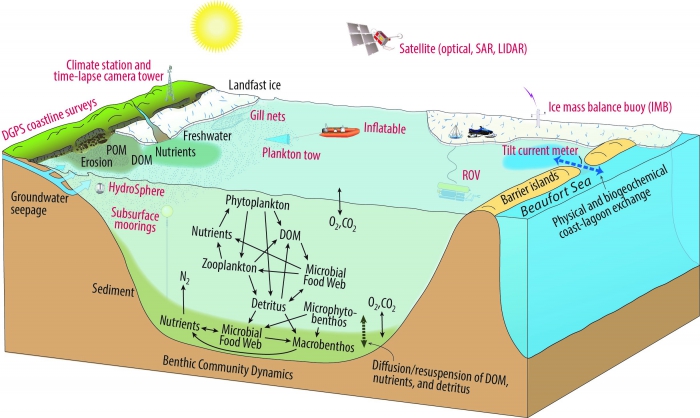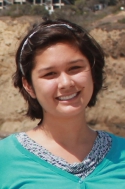By: Christina Bonsell, Project Manager, Beaufort Lagoon Ecosystems Long-Term Ecological Research Program
Every spring at ice break-up, the coastal waters of the Alaskan Beaufort Sea come alive with the onset of phytoplankton blooms, freshwater inflows, the migration of anadromous fishes from the sea back to fresh water to spawn, and the arrival of thousands of migratory shorebirds and ducks. These events mark the end of a long winter and the beginning of a vibrant subsistence harvest that occurs within protected waters of barrier island lagoon habitats which encompass more than half the Alaskan Beaufort Sea coast. The timing of this dramatic seasonal transition changes from year-to-year and is accompanied by abrupt shifts in salinity, dissolved oxygen, and pH as a result of ocean exchange processes that vary among lagoons. How does this strong seasonality, which is also aligned with temporal inputs of organic carbon from terrestrial and marine sources, affect the ecological functioning of these coastal systems and the resiliency of lagoon food webs?
This overarching question is the basis of the Beaufort Lagoon Ecosystems Long Term Ecological Research program (BLE LTER), funded by the National Science Foundation. The research program is built around four central themes, which are examined over seasonal and multi-decadal time scales:
- How, and in what form, do nutrients arrive in the lagoon systems?
- How do changes in ice, freshwater discharge, and circulation influence connectivity between lagoons and shelf?
- How are biogeochemical processes in the lagoons linked to terrestrial inputs, autochthonous production (i.e., native to the lagoons), and ocean exchange?
- How do changes in land-ocean connectivity, water residence times, and sea ice persistence influence benthic (bottom layer) and pelagic (upper layer) community structure, resilience, and trophic linkages (the related food web?


The BLE LTER employs continuous in situ monitoring, remote sensing, seasonal sampling of the benthos and water column, and modeling to address questions of ecosystem connectivity, stability, and resilience in an environment structured by highly dynamic and seasonally-driven physical forces. The geographic scope of this project involves intensive work in six lagoons distributed across 500 kilometers of the northern Alaskan coastline, with operations based out of Utqiaġvik, Prudhoe Bay at the mouth of the Sagavanirktok River, and Kaktovik. This broad geographic scope captures gradients in watershed and ocean characteristics that interact with seasonal drivers of ecosystem dynamics.
Watersheds that feed into the lagoons systems along the Beaufort Sea coast steepen in topography from west to east, which causes a related decrease in dissolved organic carbon and nitrogen concentrations in river inputs (Connolly et al. 2018). Water mass movements on the shelf that exchange with lagoon waters include the eastward flowing Mackenzie River plume and westward flowing Pacific waters. Additionally, certain lagoons are positioned at the mouth of major Arctic rivers: the Sagavanirktok River empties into Stefansson Sound, and the Jago River empties into Jago Lagoon. Kaktovik Lagoon, on the other hand, receives no major direct freshwater runoff sources. The level of exchange with the ocean also differs – the lagoon-ocean connection remains open during all seasons at some locations, while at others it closes in the winter, which results in hypersaline conditions (Harris et al. 2017).
These variations in environmental setting result in food webs that are distinctive with respect to species composition and trophic connectivity to marine vs. terrestrial sources of carbon. The largely omnivorous feeding strategy of benthic organisms which assimilate combinations of carbon sources reflects trophic redundancy in lagoon food webs. Such characteristics are useful in assessing local ecosystem stability (low temporal variability) or resilience (recovery to disturbance) over time scales ranging from seasons to years.

The BLE LTER is part of a network of NSF-funded Long-Term Ecological Research programs. The range of ecosystems studied by the other twenty-seven LTERs spans from the dry valleys of Antarctica, to Pacific coral reefs, to the Everglades. The BLE LTER is the most northern of all the LTERs, and one of four in Alaska, alongside the Northern Gulf of Alaska LTER, the Bonanza Creek LTER, and the Arctic LTER at Toolik Field Station. This cluster of LTER sites within Alaska allows for particularly exciting collaborative opportunities to tackle questions of a rapidly warming climate across marine and terrestrial landscapes of the region.
A strong commitment to community engagement is central to our program. We are working to exchange science and local knowledge through a panel of traditional knowledge holders in Kaktovik, Alaska, in collaboration with the North Slope Borough Department of Wildlife Management and the Bureau of Ocean Energy Management. We also regularly hold community meetings and distribute a newsletter in Kaktovik to update the community about our activities and solicit feedback. We continue to bring hands-on science education to Kaktovik students through the Kaktovik Oceanography Program, began in 2007 by Ken Dunton (University of Texas at Austin), in partnership with Harold Kaveolook School and the U.S. Fish and Wildlife Service. This coming year, we are excited to introduce new folks to our research and expand our impact through NSF-funded Research Experience for Undergraduates and Research Experience for Teachers programs. We are appreciative to the local communities of Kaktovik and Utqiagvik, whose support has been integral to the success of our research and our education programs.
More information about our project, and access to project data can be found on our Beaufort Lagoon Ecosystems LTER website. We are on Twitter @ArcticLagoons, and Facebook at facebook.com/ArcticLagoons.
The BLE LTER is co-directed by Ken Dunton and Jim McClelland at the University of Texas at Austin and comprises investigators from the University of Virginia, the University of Texas El Paso, the University of Massachusetts Amhurst, Oregon State University, the University of Toronto, and the University of Alaska Fairbanks. We are funded by NSF award #1656026.
References
Connolly, C. T., M. S. Khosh, G. A. Burkart, T. A. Douglas, R. M. Holmes, A. D. Jacobson, S. E. Tank, and J. W. McClelland. 2018. Watershed slope as a predictor of fluvial dissolved organic matter and nitrate concentrations across geographical space and catchment size in the Arctic. Environmental Research Letters 13:104015.
Harris, C. M., J. W. McClelland, T. L. Connelly, B. C. Crump, and K. H. Dunton. 2017. Salinity and Temperature Regimes in Eastern Alaskan Beaufort Sea Lagoons in Relation to Source Water Contributions. Estuaries and Coasts 40:50–62.
About the Author
 Christina Bonsell is a marine ecologist and earned her PhD in Marine Science from the University of Texas at Austin in 2019. She is a Research Scientist Associate at the University of Texas Marine Science Institute and Project Manager for the Beaufort Lagoon Ecosystems Long-Term Ecological Research Program.
Christina Bonsell is a marine ecologist and earned her PhD in Marine Science from the University of Texas at Austin in 2019. She is a Research Scientist Associate at the University of Texas Marine Science Institute and Project Manager for the Beaufort Lagoon Ecosystems Long-Term Ecological Research Program.
